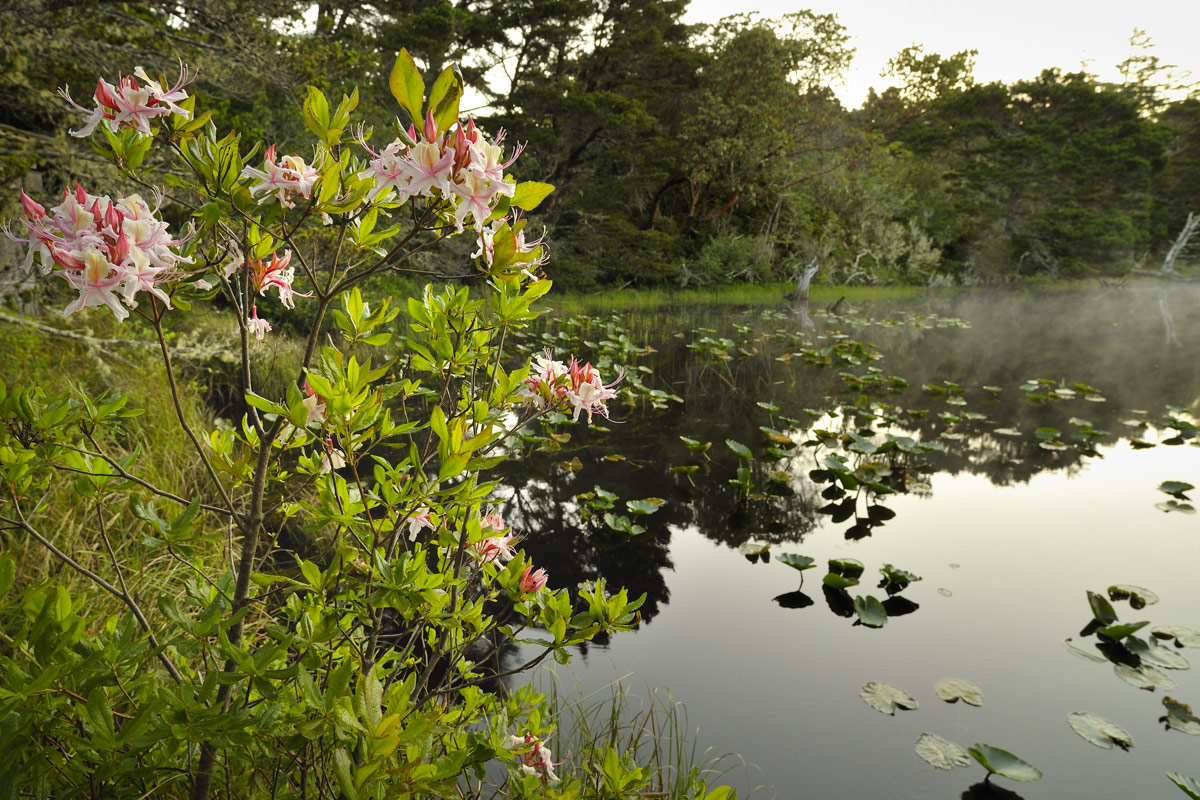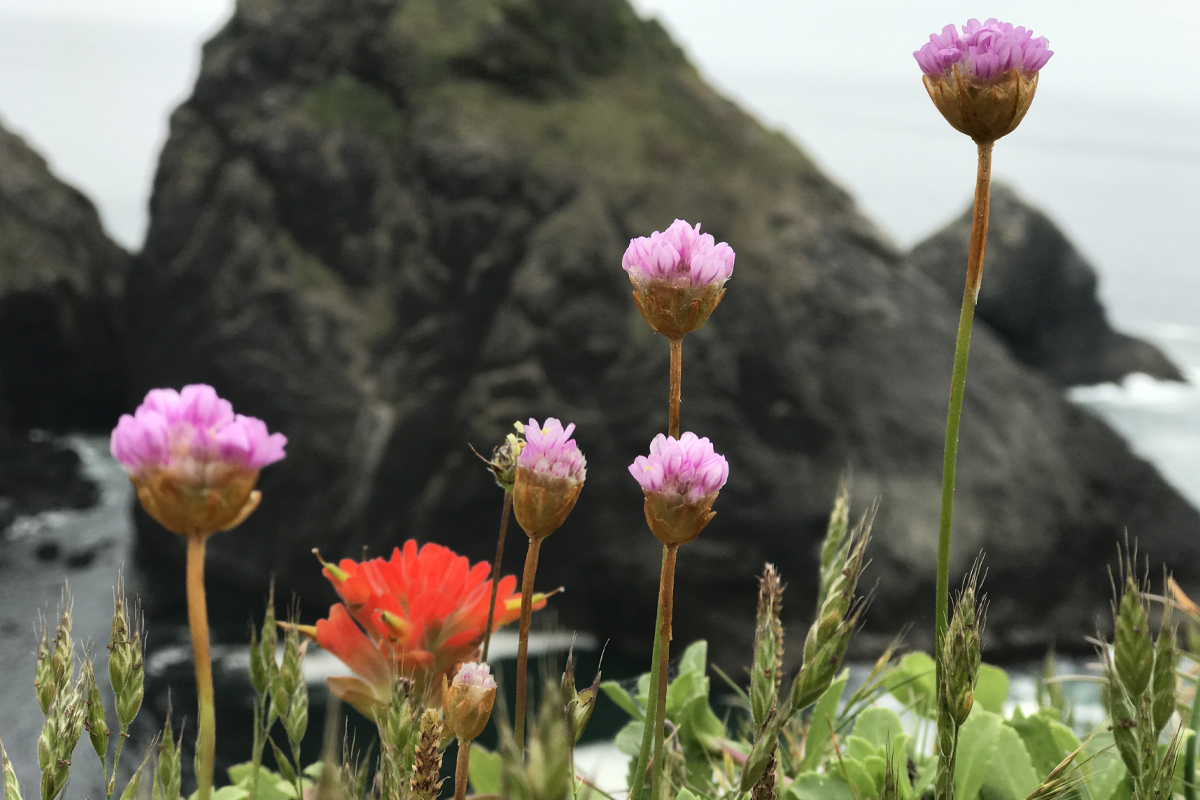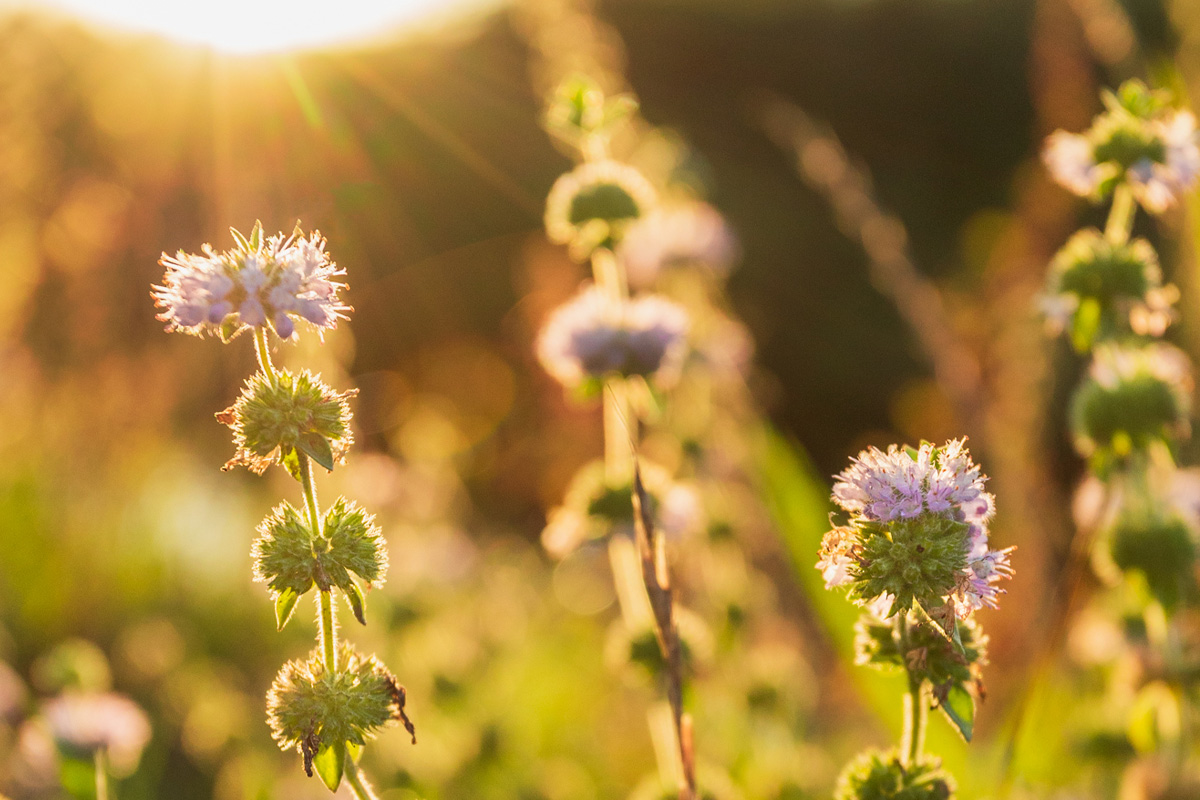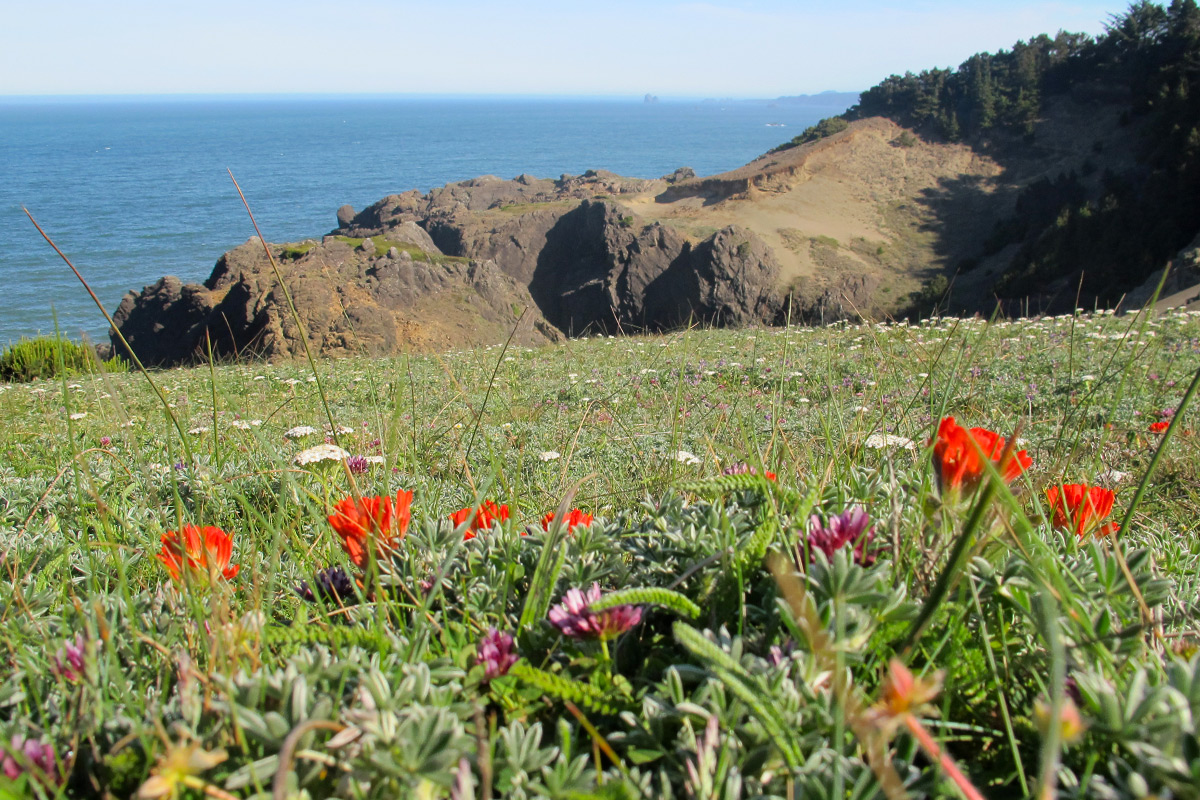ENJOY VARIED HABITATS, RUGGED CLIFFS, WILDFLOWERS AND SOLITUDE AT THESE STUNNING SITES.
The unique landscape of the Southern Oregon Coast — where Pacific Northwest temperate rain forests transition into drier Northern California ecosystems — is a must-see for anyone interested in botany. It’s where the older, harder rocks of the Klamath Mountains meet the sandy sediment terraces rising from Pacific Ocean beaches, creating dramatic cliffs and unique soils where rare plants thrive. In April and May, enjoy the diverse ecosystems that flourish along the South Coast with wildflowers brightening Sitka spruce forests, wetlands and coastal meadows. Here are four off-the-beaten-path hikes to enjoy the springtime blooms.

1: New River
As its name suggests, New River is, in fact, new — well, relatively. In 1890 a severe storm deposited so much sand south of Bandon that it blocked Floras Lake’s ocean access, sending water north along a newly created sand spit. The river now runs 9 miles parallel to the Pacific before flowing out to the sea. Within the 1,200 acres of the New River Area, many rare plants, animals and birds call this dynamic ecosystem home. A series of trails (about 5 miles’ worth) loops through wetlands, meadows, shore pine forests and dunes.
During peak bloom times, ranging from April to June, enjoy robust dune-plant populations and wild rhododendron overarching shadier paths with pretty clusters of pale-pink blossoms. The carnivorous darlingtonia pitcher plant and once-cultivated cranberry bogs (look for pink flowers) grow in the wetlands, as do three-petaled trillium and skunk cabbage, with its bright-yellow blooms. If you’re lucky, you can spot one of the only populations of the federally endangered western lily, with six striking flame-like petals.

2: Port Orford Heads State Park
A 1.2-mile loop trail at Port Orford Heads State Park takes you through salal thickets, Sitka spruce and Douglas fir forests to headland meadows with coastal views. Along the route, you’ll see the remnants of a defunct Coast Guard lifeboat launch and perhaps sea lions sunning themselves on the rocks below. Look for the lighthouse at Cape Blanco, the westernmost point of Oregon, to the north, and Humbug Mountain rising into the mist to the south — both great areas for more wildflower hikes. Vivid-purple tough-leaved iris dot the hillside, and white and magenta flowers appear on thimbleberry and salmonberry bushes in May and June. On the headlands, keep your eyes open for fuzzy little mariposa lilies and yellow coastal gumweed with aster-like flowers.

3: Otter Point
Not far from where the Rogue River meets the ocean is one of the state’s lesser-known parks called Otter Point State Recreation Site, a 120-acre site just north of Gold Beach with unique sandstone formations and wildflowers within a mile of the parking lot. Short loop trails take you through a colorful meadow with sweeping ocean views, including Cape Blanco to the north. White western azalea, orange tiger lily and lavender seaside daisy bloom, typically peaking in April and May. To make it a longer hike, venture down the Oregon Coast Trail to the beach south of Otter Point, and head toward the Rogue River North Jetty, a 7.7-mile out-and-back trail, where you’re likely to see flowers adapted to sandy soils, like the yellow sand verbena and seashore lupine.

4: CAPE FERRELO
At the southern end of the 12-mile Samuel H. Boardman State Scenic Corridor near Brookings, Cape Ferrelo’s meadows become awash in color come spring. A 1-mile loop trail takes you to the top of the cape through mature Sitka spruce forest and a grassy slope where purple Douglas iris, lupine, orange monkey flower and scarlet paintbrush bloom, typically peaking from April through May. For a longer adventure, consider heading 4 miles north to Whaleshead Beach, where you’ll be rewarded with more rugged views, secluded beaches and towering spruces, plus trillium, salmonberry, a variety of lilies and salal blooms.
If You Go:
- Be kind to the Coast: Remember to stay on the trail and avoid picking flowers.
- Check ahead for park updates and closures, and be sure you know pet rules before bringing your pup.
- Peak blooms vary from year to year, so visit Northwest Wildflowers’ map before you go to see flowers that are currently blooming.
- Stay safe by keeping away from cliff edges, which can be unstable, and logs on beaches, which can roll in the waves unexpectedly. Check tide tables before any beach walk, watch for sneaker waves and never turn your back on the ocean.